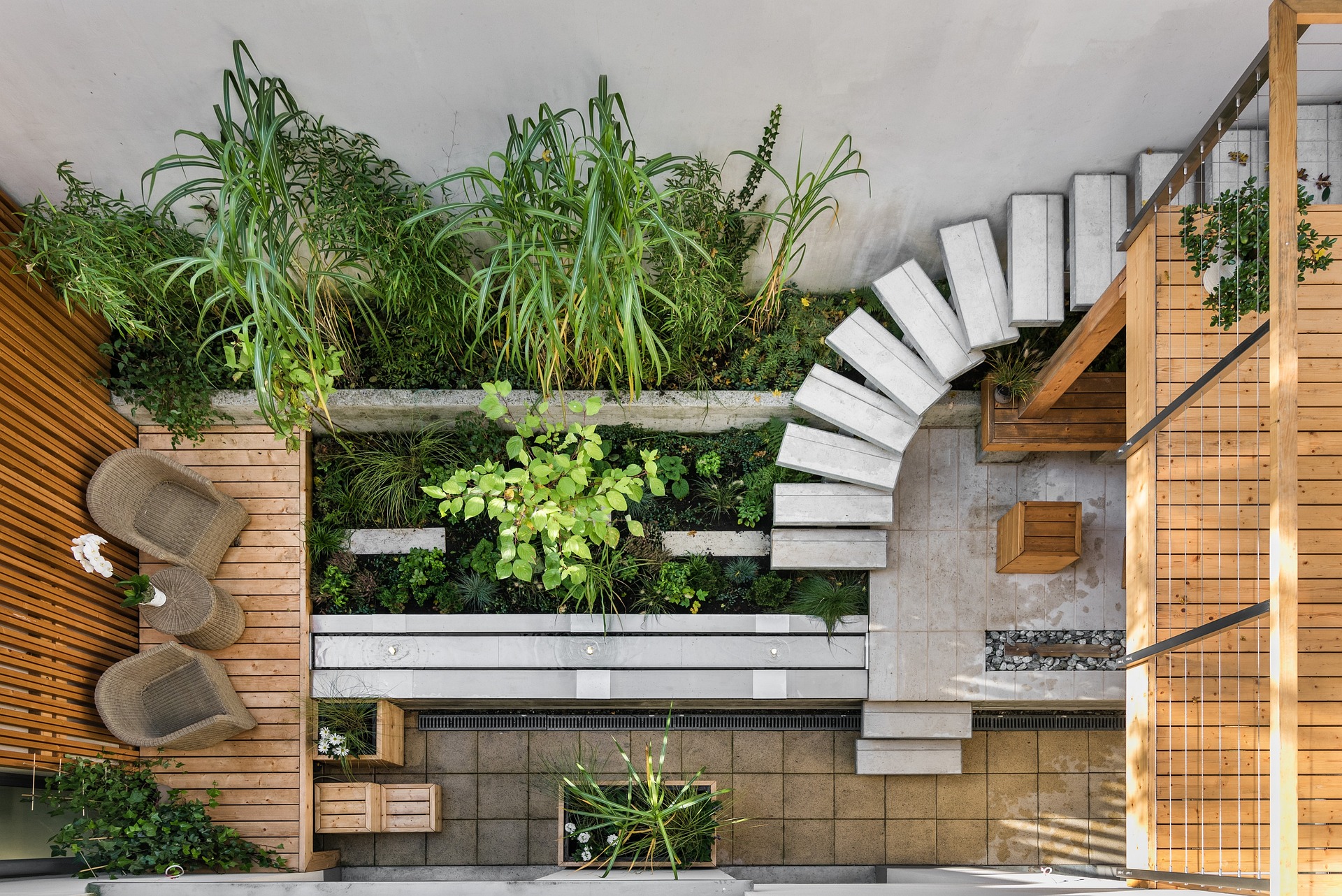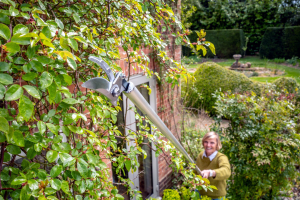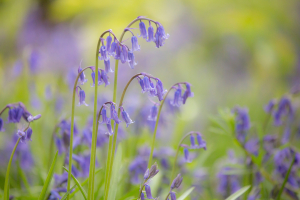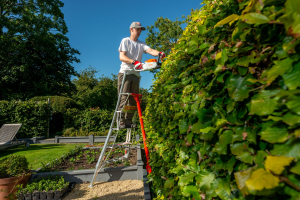Urban Garden Design: Small Garden Ideas To Make The Most Of Your Space

Whether you’re a city dweller or just don’t have much space to work with, small gardens shouldn’t limit you when it comes to garden design. We all know gardens provide a form of sanctuary for those of with green fingers, so that’s why we’ve written this guide to offer some small garden inspiration. You may have to get a little more creative, but with our tips you’ll have a beautiful city garden to be proud of.
What is the difference between urban gardening and rural gardening?
The first difference between urban and rural gardens is, of course, the size and setting. Cities have less space than small towns and villages, with more people and housing to accommodate. There is often less space left for city gardens which, at first, you might have no idea what to do with.
You may have high walls either side of your garden, creating more shaded areas that the sun can’t quite reach. Soil may also be different from rural areas, due to past contamination from building works and old plants.
Urban gardens are also more likely to suffer from sunscald - heat damage on plants. This is thanks to the amount of concrete and paving stones in cities, holding on to heat for a long period of time.
The above differences may seem like huge hindrances for your urban garden design, but don’t let them put you off! We’ve got all the handy tips you need below to create the small garden of your dreams.
Small garden design ideas
Small urban garden spaces can often feel uninspiring. You may look at it and think that there’s really not a lot you can do with the area you have. But there's endless opportunities when it comes to creating a beautiful small garden, such as:
- Raised flower beds - good for space
- Sunken or a raised garden
- Mini fire pit area
- Vegetable garden patch
- Vertical garden elements ideal for urban gardens as takes away from solid walls and creates space
- Climbing plants up a fence or side of your house
- Courtyard/patios
- Inside outside - designing your garden as extension of house
- Permaculture - working with natural elements
You can find plenty of garden inspiration for small places on sites such as Houzz or Pinterest. You could also watch series such as Gardeners’ World, or find inspiration in magazines and garden books. And if you fancy a day out, you can also visit a garden show to see what the latest trends are and speak to various experts for advice (you might even see us there!).
How to design an urban garden
When designing your small city garden, there are a few things to consider:
- First, you need to have an idea of what you want your garden to be - how will you use your space? What do you want it to look like? How often will you use it?
- You should also think about the size. While there are lots of things you can do with a small garden, you also don’t want to overcrowd it or add plants or trees that will eventually outgrow your space. Unless you’re growing plants to increase your privacy, we’d recommend steering clear of very large shrubs. You can find a recommended list of plants for urban gardens here.
- Break your garden into ‘zones’ if you have multiple uses for it. For example, if you’re growing your own vegetables, then you’ll want a space designed specifically for this purpose, away from a social space where people might tread on the soil. You can have a separate zone for garden tool storage, out of the way so it doesn’t interfere too much with your design.
- Think about the view from your window. Here in the UK, we’re prone to some wet and windy weather, so there’ll be plenty of times where we’re just looking out to our gardens rather than spending time in them. So you may want to place your main feature where you can see it from inside.
- There are also a few garden features that may or may not work as well in an urban setting. The plants you’ll want to grow will be affected by sun exposure - as we said earlier, some areas of an urban garden can be quite shaded, whereas others can be a suntrap. You should factor this in when deciding what to plant.
Now you have an idea of the aspects to consider when planning your garden, we’re going to look through a handful of small urban garden ideas that you can incorporate.
How to make a garden look bigger
We imagine that this is a question you’re asking when tackling a city garden design. There are a few tricks you can try to create the illusion of a larger space, all of which are simple and can be done in almost every garden.
Perspective is key. You want to extend your view of the garden - give yourself something to look at at different levels. Create different heights in your garden, by incorporating features such as decking, or planting taller trees and plants to add depth and take the focus away from boundaries within your garden.
This is a great opportunity to get creative. Try different colours, architectural elements and materials. Adding ‘zones’ to your garden will also create the feel of a bigger space as it adds more interest for the viewer. Paths are also a nice addition as they make a garden feel longer.
Climbing plants also hide solid walls and fences, blurring the boundaries within your garden, making it feel bigger.
How to decorate the exterior of your house
Urban gardens are often enclosed by walls and the exterior of your house. Space is tight, but sprucing up the back of your home creates another opportunity for you to maximise your outdoor space.
Of course, you can always start with a fresh lick of paint, whether you choose a neutral colour as a base or something more unique. You can also use attractive features such as cladding to really make it stand out.
Once you’ve made a ‘base’ on your home exterior, you can now start adding plants and garden features to the wall, fully merging it with your garden. This will leave you more space to put your small city garden ideas into action, and give you a fun project to work on as your plants continue to grow.
The vertical garden trend is ideal for small spaces. It allows you to make the most of a small garden by growing plants and flowers up a wall or fence. This especially works well in urban settings, allowing you to add some colour to your street while also creating a more natural space.
Climbing plants and hanging baskets count as vertical garden features. We’ll talk through these particular features below, and how you can easily add them to your small garden plan.
What you need to know about wall climbing plants:
There are different types of climbing plants - self-clinging, twining and wall shrubs. Climbers are what you normally think of when you think of wall climbing plants e.g. wisteria, ivy and Californian lilac ‘Concha’. These plants either naturally grow vertically, or grow sturdy stems that you need to attach to the wall yourself. Wall shrubs, on the other hand, are not natural climbing plants and tend to grow outward, so you’d need to train these particular plants to grow vertically.
Whichever wall covering plants you choose, they can make an attractive element as part of your small garden designs and layouts. When deciding which plants to go for, try and consider the following:
- Consider the sunlight levels. Climbing garden plants are meant to be a stand-out feature, so you want to give your plants the best conditions to thrive. Research which types of flowers do well in your garden climate - the RHS has a guide for this here.
- You should also be considerate of your neighbours - we’d recommend against choosing an invasive plant, as this could affect your neighbours home, which could leave you in a pickle later down the line.
How to support climbing plants on a wall
Each type of climbing plant needs to be supported in different ways, with some being more vigorous than others. You need to start with a support that your plant can attach itself to. There are different options you can choose from when buying:
- Wire clips - installing horizontal lines of wire across the wall, which the plants will naturally grow on to.
- Trellis - a great option if you’re worried about damaging your wall. You can make these yourself or buy one from garden and DIY retailers.
- Screens - usually made from plastic and mesh.
For guidance on installing climbing wall plants, have a read of the RHS’ guide.
How do you care for climbing plants?
The way you care for your flowers will vary depending on your type of wall climbing plants. However, there are a number of tips that will help train your plants and leave you with a beautiful garden/house wall:
- Don’t overwater - you only really need to water in dry or shady conditions. Younger shoots will require more water than older plants.
- Keep on top of new growth, tying it to the wall as the stems continue to grow.
- If your stems are weak, cut back the main stem by a third to encourage it to spread out.
- Prune your plants once a year - for climbing roses, you can find out more about rose pruning in our guide.
- Clip away any messy areas using secateurs.
Ladder safety when growing plants on a house
As your wall climbing garden plants grow, you’ll need to start using a ladder to maintain your flowers. Your safety is paramount here, especially as you’ll eventually be working from quite a height.
With your average ladder, you simply lean it against the wall, but it’s not always the best option. It could slip, wobble, and it can crush your flowers if you’ve no clear space to lean against.
Investing in a sturdy ladder can make looking after beautiful wall climbing plants both easier and safer. Here at Henchman, we have just the ladder you need.
Our tripod ladders are designed specifically to keep you safe on uneven ground. With three adjustable models to choose from, you can increase your height as your plants grow, while not leaning against them or sinking into the ground. You can prune your plants handsfree, and with the spacious platform, you can stand back and get some perspective, to check that your clippings are even and there’s no sparse gaps on the wall.
Our Hi-Step ladders have a wide, comfortable platform, perfect for working at height for longer periods of time. You can lean in three different directions, and the legs adjust, meaning you can increase your height with your fast growing climbing plants. Again, you won’t have to lean your ladder against the wall, meaning that you can maintain your wall climbing plants safely and easily.
How to do hanging baskets for garden wall decorations
If you don’t like the sound of wall climbing plants, or don’t have the time to look after them, there are plenty of other alternatives. We’re fans of the classic hanging basket here at Henchman, as there are so many hanging basket designs that you can do to make your garden stand out.
You can choose the simple, classic basket, or a tiered look, with baskets of different sizes hanging above each other. If you don’t want to buy one, try making your own as a small project. You can also grow vegetables and herbs in a basket, making it a practical vertical garden idea for small spaces.
Wall flower baskets can also be hung almost anywhere, no matter your small urban garden design, from the corners of sheds and porches to trellises fixed on your exterior wall.
We’ve covered pretty much everything you need to know about hanging wall baskets in our summer hanging basket guide, so here’s just a summary of the basics:
- Be mindful of over planting - space is limited in these baskets and your flowers need room to go. If you want a basket that’s full of plants, consider using a larger size.
- Generally, you want to plant 2-3 species and 6-9 plants in each basket.
- Water retention is key to creating beautiful hanging baskets. Choose a good basket liner - the three main types are Sphagnum Moss, Cocoa and Supamoss.
- Keep on top of weeds - you don’t want them taking up space in your basket.
Again, if you’re planning on hanging wall planters outdoors at a greater height, you should use a stable ladder that allows you to bend over safely, so you can properly hang your basket without wobbling or worrying about falling off.
Henchman garden tools for creating beautiful small gardens
Small city gardens shouldn’t hinder your garden design. At Henchman, we have the garden equipment needed to create a beautiful small garden that fully maximises the space you have. From our innovative garden ladders to our secateurs and even our garden sheet to make the tidy up a little easier, you can transform your urban garden into a natural haven that you’ll love for years to come. Get in touch to find out how we can help you, or try our Find a Ladder tool to see which ladder best suits your needs.



